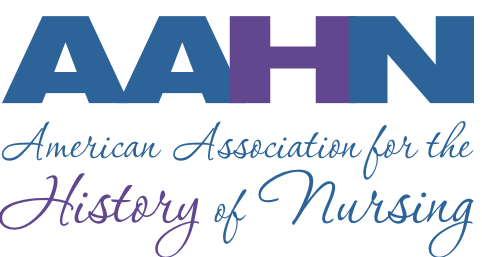- Home
- About AAHN
- Membership
- Research & Resources
- Publications
- Conference
- Members Only
- Contact Us
Invisible Illnesses and Hidden Disabilities: Britain’s Disabled First World War Nurse VeteransAmanda Gwinnup The professional and volunteer British nurses of the First World War hold a special place in the cultural memory of the war and while their actions during that conflict have been researched not much is known about their experiences after the Armistice. This doctoral research, due to be completed in 2022, explores the experiences of Britain’s First World War nurses who lost their livelihoods as a result of disabilities resulting from their war work. Many nurses contracted illnesses, such as malaria, dysentery, tuberculosis and influenza that had long-lasting effects on their health and a significant number of nurses suffered from war-related neuroses commonly known as shell shock or neurasthenia. This research further defines war-related neuroses as it pertains to female medical workers, an area of study that has received very little attention and relates their psychological trauma to the conditions in which they served. The development of long-term debility in illness cases are examined to illuminate the link between the physical ailment and the mental stress as those illnesses lingered and went from acute to chronic; a number of nurses were diagnosed first with a physical illness and then with neurasthenia as time went on. The majority of the cases examined for this research belong to professionally trained nurses employed during the war by the Queen Alexandra’s Imperial Military Nursing Service Reserve (Q.A.I.M.N.S.R) and the Territorial Force Nursing Service (T.F.N.S). As professionally qualified nurses they would have possessed expert knowledge allowing them to act as expert patients, although their expertise rarely factored in during the Ministry’s considerations of their pension cases. In most instances nurses needed to acquire outside help from advocates, often consulting with the British Legion and the Officer’s Friend, which was an organization specifically established to act an intermediate in the pension application process, or from male relatives. A number of the pension records contain letters penned by male relatives or acquaintances, and while many of the letters are similar to those written by the women, the letters possess a tone of authority. While gender factors into many aspects of this research it will be argued that the civil servants at the Ministry of Pensions did not consider the nurses’ disability pension claims separate from that of male officers and, in fact, considered the nurses as veterans first. The only gender bias present in the pension claims come from the members of the Medical Boards, mostly male doctors formally belonging to the Royal Army Medical Corps, who tended to disregard the nurses’ expertise, testimonies, and sometimes physical evidence. In spite of the many obstacles that faced the disabled nurses many were successful in their pension claims however meager the compensation was. A number of nurses received a final award (a pension set for life) at one-hundred per- cent, the majority received less than thirty per-cent which amounted to roughly £40 per year, while others received a one-time gratuity payment that closed their cases and made it impossible for them receive further treatment or compensation from the government. The one-time payment only offered immediate financial help. For those nurses suffering with periodic debility following an illness or psychological trauma this left them financially insecure as the majority were unable to continue working in the nursing profession. Some of the women were able to find help through friends and family but a minority of the nurses struggled to provide themselves with the very basics. At least two professional nurses were force to ‘live rough’, one in Wales and the other near Kent. Although this research is objective in its approach it would be impossible to ignore the narratives of the nurses’ experiences that emerge from their letters and testimonies as their own words illustrate their struggles with hidden disabilities, unseen by the general public and overlooked by history.
|
